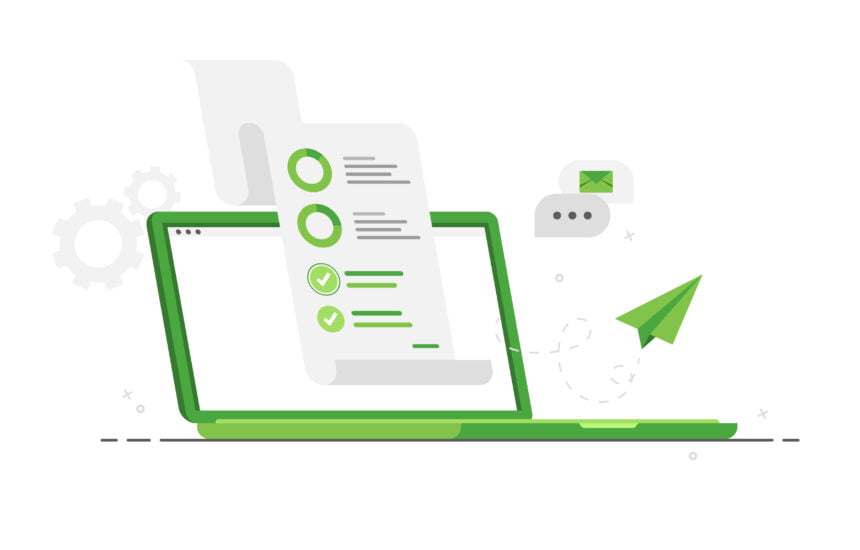Advancements in technology have allowed it to store and collect databases in many fields. If we count the number of data on the web, it is probably a number that we have never heard of. However, it’s all about the quality and not the quantity when collecting data.
Moreover, some companies are sitting on loads of consumer data and don’t know what to do with it. In short, consumer data is the gold of surveys and all market research conducted.
Well, if you are someone who has loads of data and aren’t using it for your surveys and you would love to learn more on how to use it, don’t go anywhere because, in this article, we will show you data mining tips you can use to leverage your surveys.
5 data mining tips for leveraging your surveys
1. Get to know your customers with survey templates
Since you are collecting large chunks of data, what better than to start knowing more about your customers? Undoubtedly, learning more about your customers is one of the best things you can have and directly impacts the decision-making process. However, in this case, the data mining activities are pretty specialized.
Moreover, it’s required to have many professionals and provide the required insights through surveys. To not begin from scratch, consider using survey templates for your business. They are the easiest and quickest way to get direct responses and not waste time setting things up. All you have to do is write the questions and clarify the type of questions you will ask in the survey. Other than that, the templates have everything ready.
2. Basket analysis
You may call it the basket analysis or the affinity analysis. This analyzes the items that customers have bought and thus, improves the layouts for online companies. For instance, it is the same case with Amazon when they recommend related products, so the term “basket” refers to what shoppers use the most when shopping.
When possessing this type of data, you can predict future consumer behavior based on past purchases and preferences. Moreover, here are a few ways you can apply this data to different industries:
- Evaluating telephone use patterns: You can identify all customers using the features your phone company offers. Then, you can provide alternatives for them to stay another year by doing this.
- Evaluating credit card usage: Most companies will consider credit card usage for identifying theft or fraudulent acts; however, the data can be used for looking at credit limits, interest rates, and collecting debt.
- Spotting fraud insurance: data mining can be used to identify lost money from fraudulent activities and develops a set of rules to help identify fraudulent claims in the future.
Regarding surveys, the basket analysis helps you identify what type of questions you can ask your consumers. After all, when you personalize your services with your customers, they’ll feel valued and help you gather the correct data.
3. Use the 5Ps model (People, Product, Promotion, Price, Place)
The 5Ps model is a popular model that isn’t only used for marketing purposes and data mining. Moreover, the data source is plural, from polls and surveys to gathering data on social media platforms. Let’s dive further into the 5Ps model:
People
Understanding the public is vital to understanding targeted custom groups from a competitive standpoint. In addition, since there is a lot of data available, you also have the opportunity to characterize clients with individual profiles. After all, it’s best to group people with similar interests, and trust us, this is crucial when carrying out a survey.
Product
Products show how your brand is perceived, and a practical application you can use is the Sentiment Analysis. It continuously monitors content published on social media platforms, on the web, on a specific product, and more.
The Sentiment Analysis helps marketing strategies focus on the company’s and product’s reputation by measuring the target audience’s sentiment. Hence, stores of any kind can customize their products differently and randomly.
Promotion
You can use it to increase customer retention and sales by setting up promotions dedicated to your target audience. In this case, it’s essential to understand the economic and social impacts of your campaigns so that you can align strategies.
The analysis mainly focused on promotional campaigns that can significantly benefit from data collected from polls, surveys, and social media analysis.
Price
Price elements are supported by marketing managers in creating and engaging with various pricing strategies, which seek to differentiate from competitors. Hence, the primary focus is to estimate the ideal price for products according to economic scenarios and the demand levels.
Place
With the increased usage of GPS devices in smartphones, stores can now use data to deliver real-time offers based on the geographical locations of consumers. In addition to that, you can use this for offering quick special offers to consumers who might be near your store in a different location across the globe.
Moreover, it’s possible to predict customers’ locations only by using social media, products, and services that rely on the customer’s location, events, and more.
4. Find out what your customers like or despise about your product
Using text mining options allows you to identify what consumers like or don’t like about your product. Most of the time, you’ll have customers stating which feature of your product they want and which they don’t. You must pay great attention to this part and take it seriously.
The more data you have, the more analyzing you have to do with additional data. Here’s what you might find out:
- Consumers won’t like a significant feature of your product and will run away soon enough
- Your consumers love your product for its main feature and will buy it over and over again
Whichever kind of information you find out, you will know if you have to make tweaks or not. Furthermore, text mining is done through surveys. Therefore, use the previous steps we mentioned to formulate better questions to find out more about your customers during the survey.
5. Use database marketing
By learning more about customer purchasing patterns and focusing on the demographics of customers to help you build their profiles, you can create products that will sell on their own. Undoubtedly, for a marketer to successfully collect data, they must continue to manage it since it isn’t a one-time process.
Database information is gathered through surveys most effectively, and you target your audience upon their categories. After all, database marketing starts with collecting information; for instance, you own an online clothing store, and you might possess the following:
- Email newsletters to update consumers every week.
- Surveys that you use to get updates and additional data regarding your new promotions or products
- Discounts you might offer and more
As you collect more data, seek opportunities on data you can gather to know, for example, when to run a discount week, where your local customers might be? Or what do your customers think about your product? And more.
Why do you benefit from surveys?
Surveys gather quality information for you, and they also ensure that the research and quality of your product are there. Control teams have to be responsible for your product improvements, and with the proper consumer insights, these teams are better informed about making strategic decisions and know what kind of further actions to take.
One of the common issues a product might have during the development phase is quality issues, so before you are ready to release a new product, you can conduct surveys to see if it’s what you expected or not.
Wrapping it up
Well, that’s all for this article. These were our data mining tips that you can use to leverage the benefits that come with surveys. Moreover, you don’t want to start a business and not know anything about your customers’ perception of your product.
Surveys have always been an effective way of collecting data, and what is great about them is how easy they are to use and set up. Happy customers will be satisfied when they see a mail about your surveys. First, however, you must know what kind of surveys you are conducting. Don’t aim to do longer surveys and include complex questions; that’ll only make your audience de-motivated and maybe even abandon the survey altogether.
Keep your surveys short, simple, and try to include helpful questions through the help of the other data mining tips we mentioned above. In short, through these tips, you are preparing to gather valuable data for your business to use and take advantage of.









